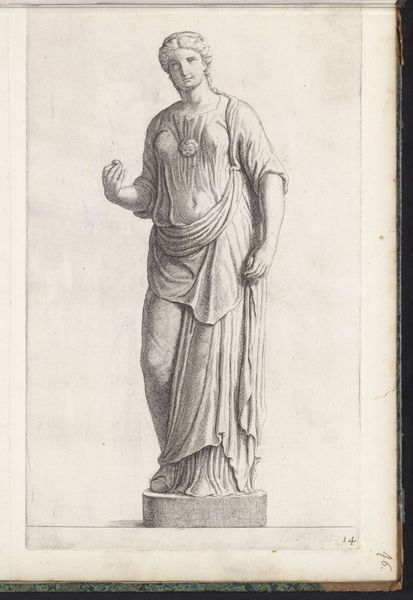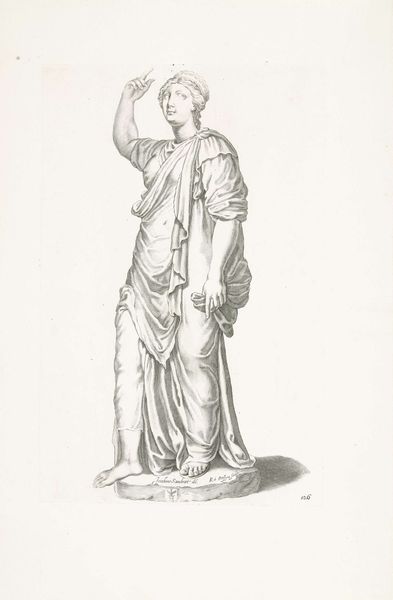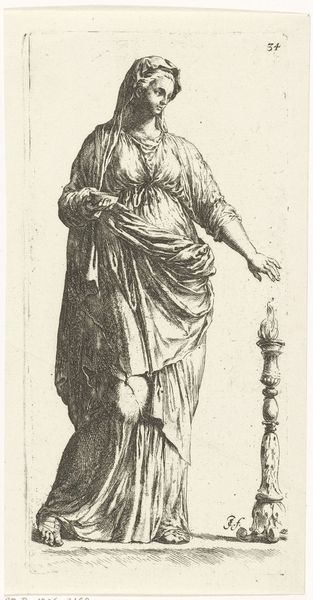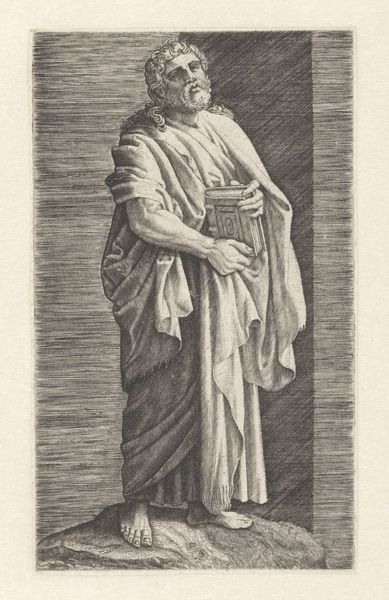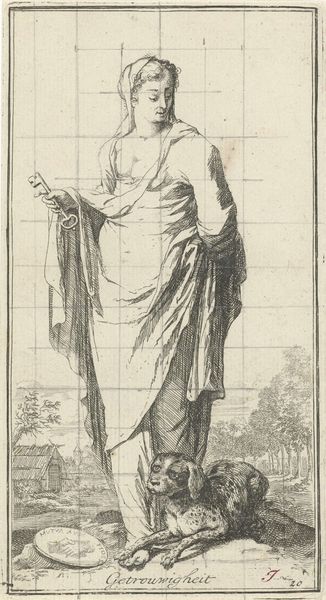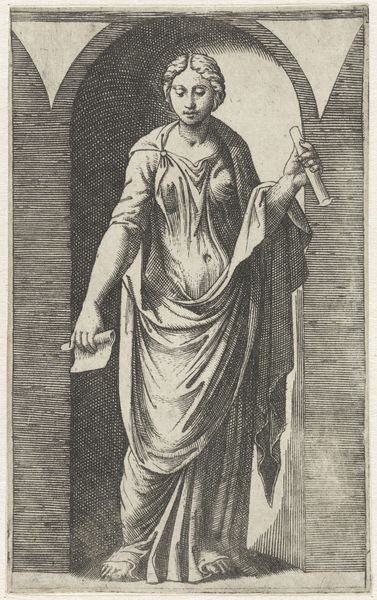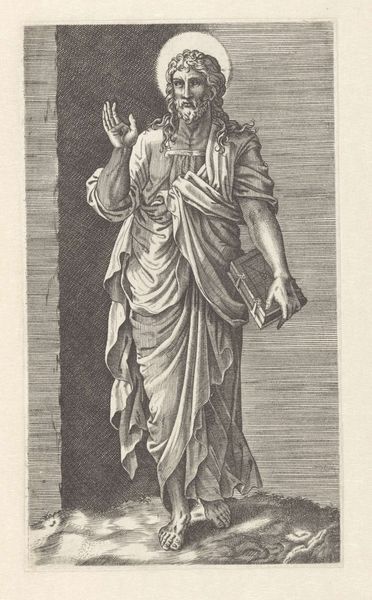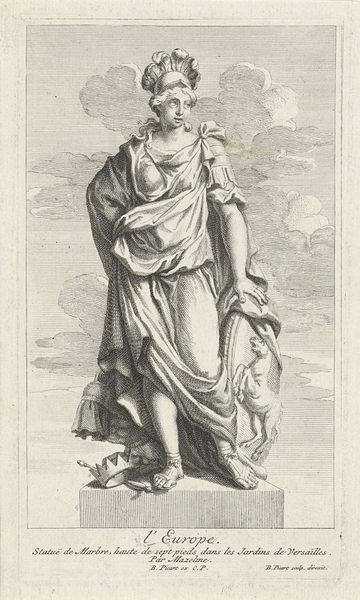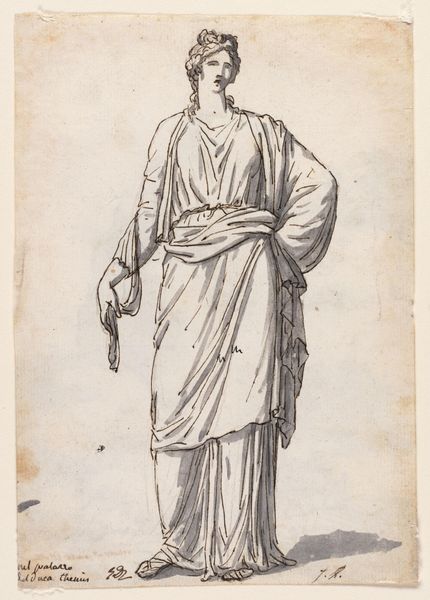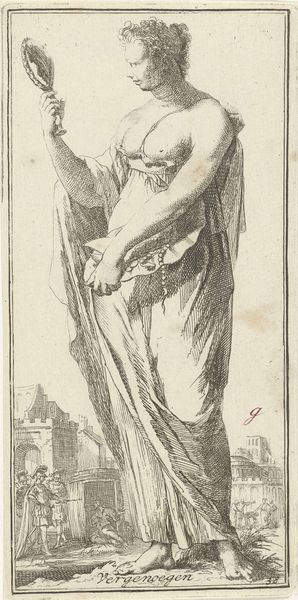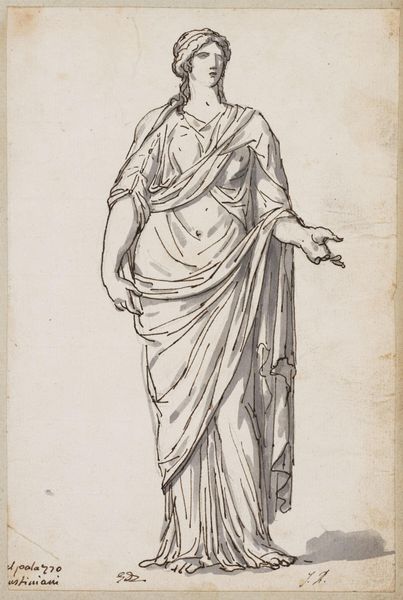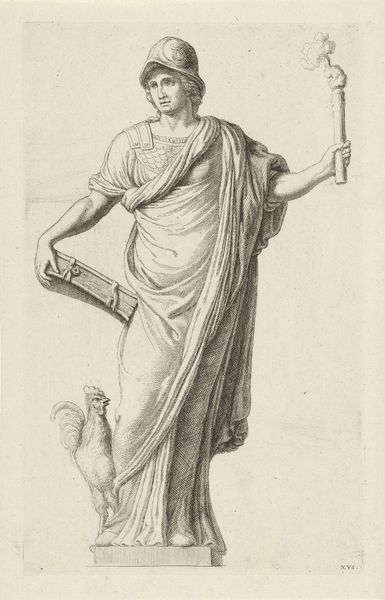
engraving
#
portrait
#
baroque
#
greek-and-roman-art
#
old engraving style
#
classical-realism
#
figuration
#
line
#
engraving
Dimensions: height 224 mm, width 135 mm
Copyright: Rijks Museum: Open Domain
This print of a muse was created by Cornelis van Dalen II, probably in the 1650s, using an engraving technique. Look closely, and you'll see a network of fine lines incised into the surface of a metal plate. The artist would have used a tool called a burin to cut those lines, each one representing a deliberate, skilled action. Ink was then applied to the plate, and carefully wiped off the surface, remaining only in the carved recesses. When paper was pressed against the plate, the image was transferred, resulting in the print we see here. Engraving, in its time, was a highly valued skill, and the prints weren’t considered mere reproductions. They were a creative translation, requiring both technical ability and artistry. Van Dalen's work gives us insight into the dissemination of classical ideals during the Dutch Golden Age, linking labor, artistry, and cultural exchange in a single, powerful image. Recognizing this helps us to expand our understanding of art history, acknowledging a wider range of skilled practices.
Comments
No comments
Be the first to comment and join the conversation on the ultimate creative platform.

